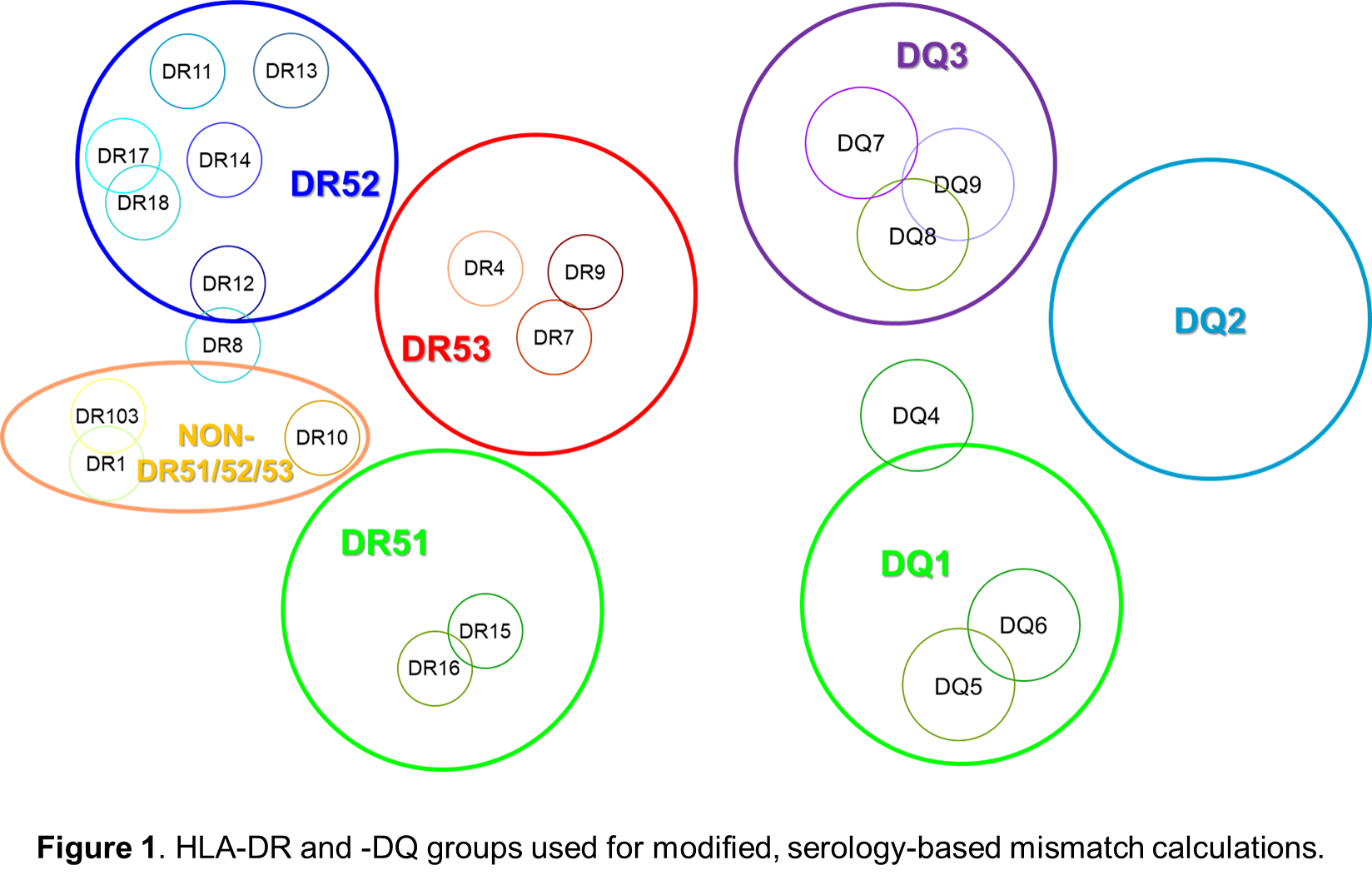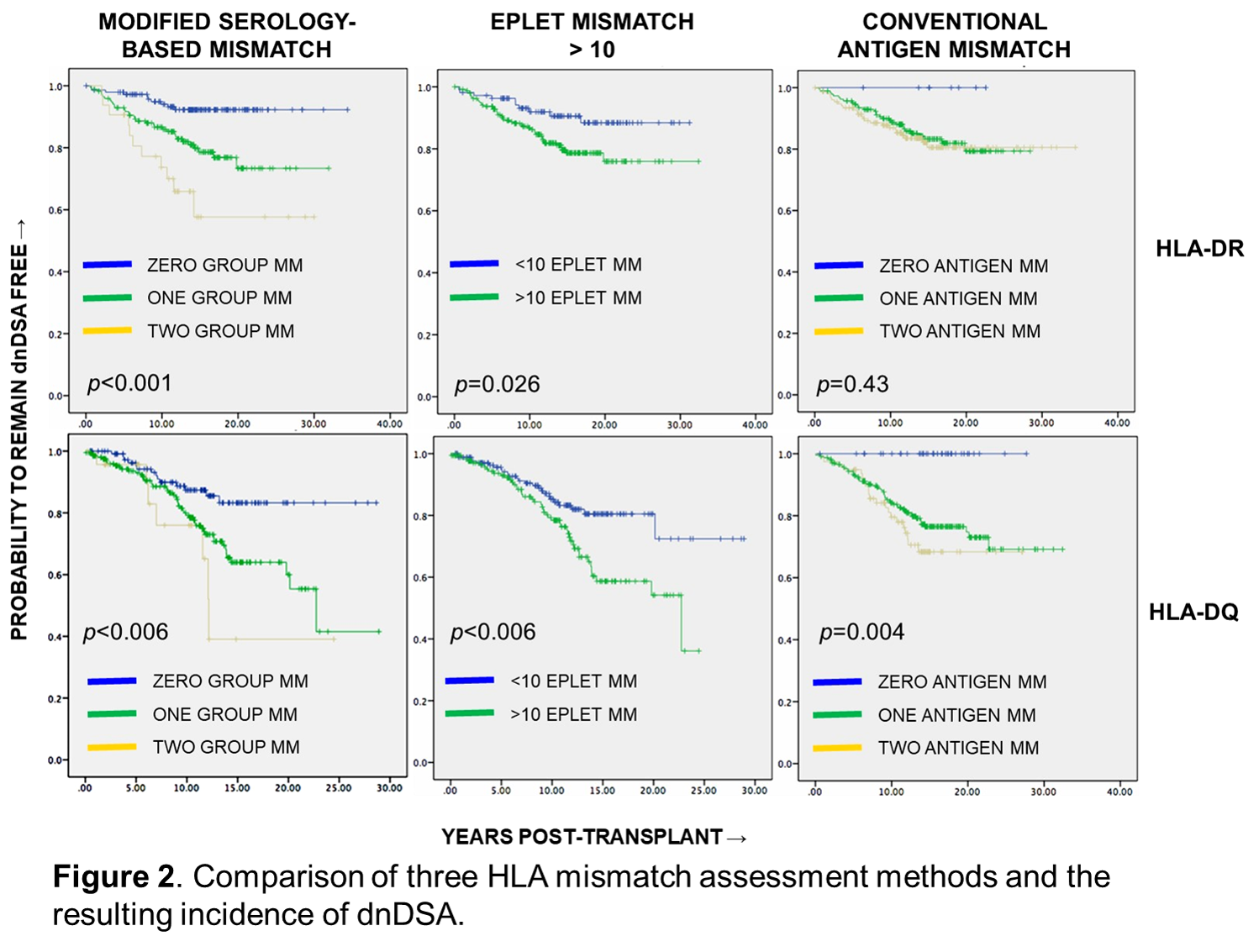An HLA Class II Matching Strategy That Predicts De Novo Donor-specific HLA Antibody Formation Using Low Resolution HLA Types
1University of Wisconsin Madison, Madison, WI, 2Instituto Nacional de Ciencias Medicas Y Nutricion Salvador Zubrian, Mexico City, Mexico, 3Medicine, University of Alberta, Edmonton, AB, Canada
Meeting: 2021 American Transplant Congress
Abstract number: 128
Keywords: HLA antibodies, HLA matching, Immunogenicity, Kidney transplantation
Topic: Clinical Science » Kidney » Kidney Deceased Donor Selection
Session Information
Session Name: Kidney Deceased Donor Selection
Session Type: Rapid Fire Oral Abstract
Date: Sunday, June 6, 2021
Session Time: 4:30pm-5:30pm
 Presentation Time: 4:35pm-4:40pm
Presentation Time: 4:35pm-4:40pm
Location: Virtual
*Purpose: The development of de novo donor-specific HLA antibodies (dnDSA) is predominantly against HLA-Class II antigens and is a function of the degree of HLA-DQ and -DR mismatch (MM) between donor and recipient. New methods to gauge HLA MM focus on predicted epitopes or amino acid differences rather than conventional HLA MM but ideally require high resolution HLA types that limits their common application. We examined whether a modified serology-based HLA-DR and -DQ matching strategy using low resolution HLA typing could similarly assess the risk for dnDSA.
*Methods: We devised an HLA Class II MM strategy that groups Class II antigens (DRB1, DRB3/4/5, and DQB1) based on serologic relation (Figure 1). The incidence of dnDSA formation was examined in 349 kidney transplant recipients with negative DSA at time of transplant. This strategy was compared to eplet calculations and conventional HLA MM for the risk to develop dnDSA.
*Results: 95 patients (27.2%) developed Class II dnDSA between 0.5-32 years post-transplant. The incidence of dnDSA against HLA-DR gradually increased with the number of MMs outside of the serology-based groupings (p<0.001, Figure 2). Using a DR eplet MM threshold of 10 showed a subtler increased risk for dnDSA (p=0.019). The risk for dnDSA with DQ MMs outside serology-based groups also increased with number of MMs (p<0.006). DQ eplet MM threshold of 10 eplet MMs similarly assessed DQ dnDSA (p<0.006). Conventional antigen MM was unable to stratify dnDSA risk for DR but could stratify for DQ (p=0.004).
*Conclusions: Our data suggest that dnDSA formation can be predicted using low resolution HLA typing and grouping of HLA antigens into serology-based groups. The associations with dnDSA were comparable to eplet mismatch calculations and better than conventional HLA matching. The simplicity of our matching strategy does not require imputations or high resolution HLA typing and may be an option for improved HLA matching from deceased donors or for programs with limited access to high resolution HLA typing resources.
To cite this abstract in AMA style:
Hidalgo L, Juarez IMartinez, Buenrostro LMorales, Shojai S, Campbell P. An HLA Class II Matching Strategy That Predicts De Novo Donor-specific HLA Antibody Formation Using Low Resolution HLA Types [abstract]. Am J Transplant. 2021; 21 (suppl 3). https://atcmeetingabstracts.com/abstract/an-hla-class-ii-matching-strategy-that-predicts-de-novo-donor-specific-hla-antibody-formation-using-low-resolution-hla-types/. Accessed December 13, 2025.« Back to 2021 American Transplant Congress


